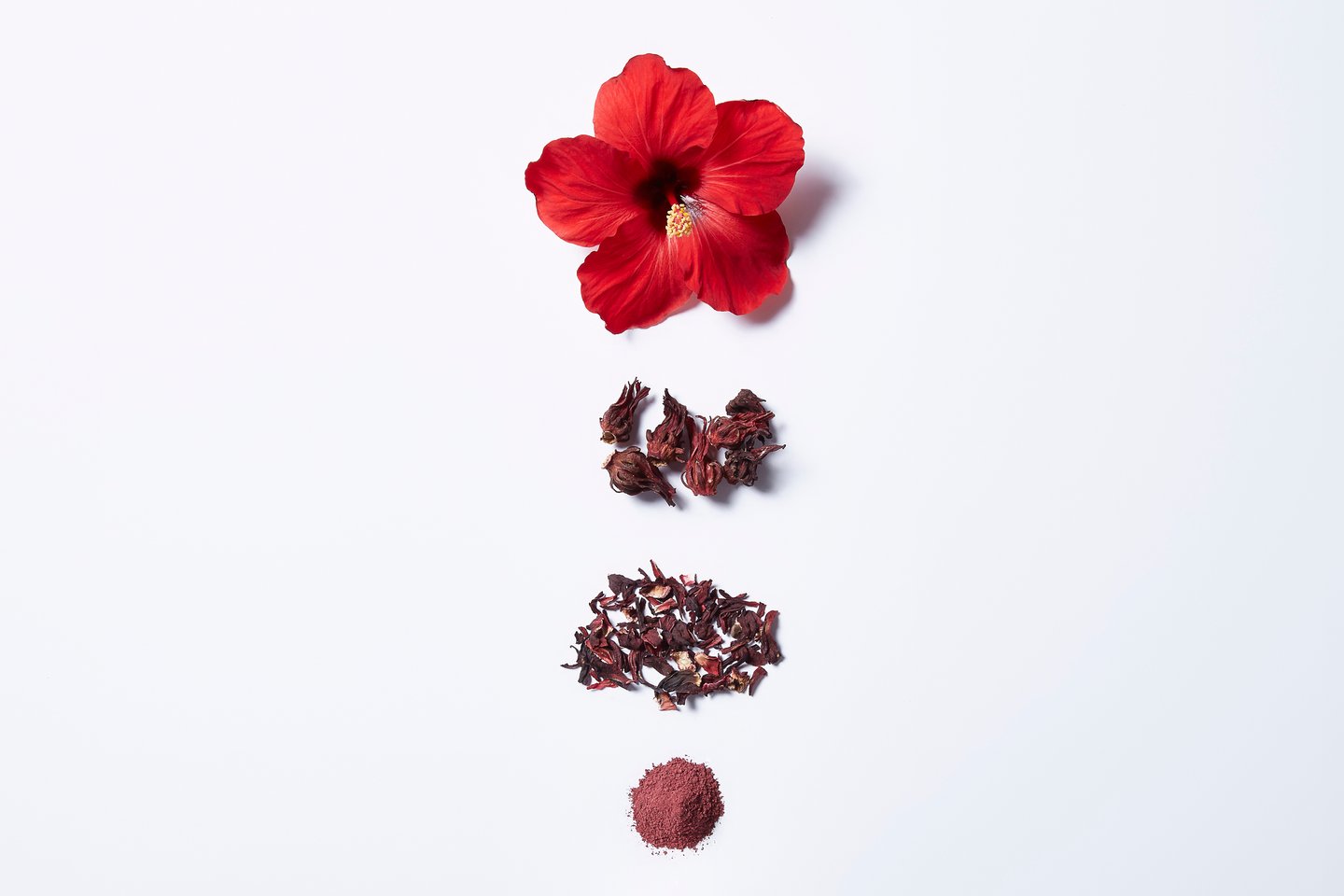Four things to know about hibiscus
1 FLORAL FLAVOUR
Tasting like a pomegranate, hibiscus sabdariffa adds notes of floral and red juicy fruits with a hint of sourness. “It has historically been paired in beverages with other fruity flavours such as the common combo, hibiscus raspberry, or the more original blend, hibiscus grapefruit,” says Manuela Chevallier- Rufigny, R&D director at Kerry Taste & Nutrition in Granby, Que. “Once paired, it resonates with nature—think botanical.” According to Kerry’s proprietary study, Botanical State of Mind, 81% of North American consumers say botanicals provide a unique taste experience, with florals being most strongly associated with the category versus herbs and spices. The same research found hibiscus ranked among the top three botanicals as being “interesting” and “creative.”
2 BEYOND TEA TIME
B.C.’s Choices Markets has seen hibiscus tea sales shift into “higher growth,” says Kelsey Moore, the chain’s nutrition operations manager. Studies showing hibiscus can lower blood pressure “may be peaking consumer interest,” she notes. But hibiscus isn’t just for teatime. “We are starting to see hibiscus appear in more probiotics, kombucha, sparkling water and water enhancers,” says Moore. At Whole Foods Market, Rachel Bukowski, senior team leader of product development, says “producers are harnassing the flavour of hibiscus in the form of fruit spreads, yogurts and more. ”
Enterprising manufacturers are helping to grow the market. Nuba Tisane, an Oakville, Ont.-based maker of an organic hibiscus drink line, got a purchase order from Loblaw for 44 stores across its banners in Ontario, Quebec and Atlantic Canada in December. The order came on the same day its co-founders, Gina El Kattan and her mother Amal Soliman—who moved to Canada in 2011 from Egypt, where hibiscus brews are a staple—appeared on an episode of Dragons’ Den. (Forecasting sales in 2021 to reach $250,000, the mother-daughter duo scored a deal with one of the dragons.)
“We’ve also since been approached by Walmart Marketplace,” says El Kattan. “Given supply chain issues, they are trying to find authentic products more locally.” Nuba products include both a sweetened and unsweetened drink, the latter popular in health food stores. Nuba also has an elderberry hibiscus flavour, and packages and sells dried whole hibiscus flowers—El Kattan says they can be used not just in beverages, but as a healthy filling for meatless tacos.
Another manufacturer, Evive Nutrition, has expanded its superfood-based smoothies found at retail with a hibiscus-infused flavour it calls Immunity. It comes after the successful launch of a special-edition smoothie in 2020, called Bloom, which “featured a generous amount of hibiscus,” says Claudia Poulin, president of the Quebec-based company.
3 STAR EXTRACTION
There are more than 200 different species of hibiscus. But when it comes to food and drink preparation, the star is the hibiscus sabdariffa, whose extract is the calyx, the red-hued leafy structure that protects the flower bud. High in calcium, vitamin C and iron as well as antioxidants, it has been used for centuries to make a hot or cold drink an enticing pink hue, and help regulate body temperature and support heart health.
4 PERFECT PAIRING
Given Canadians’ hope of travel to more exotic landscapes, Kerry’s Chevallier-Rufigny suggests retailers and manufacturers collaborate on tying-in hibiscus products with promotions around travel. They could also play up the marriage of the exotic with the familiar. “Hibiscus is often paired with a familiar flavour, and that delivers an excellent chance of market success as Canadian consumers are more likely to try an innovation that includes the assurance of a traditional taste,” she adds.

